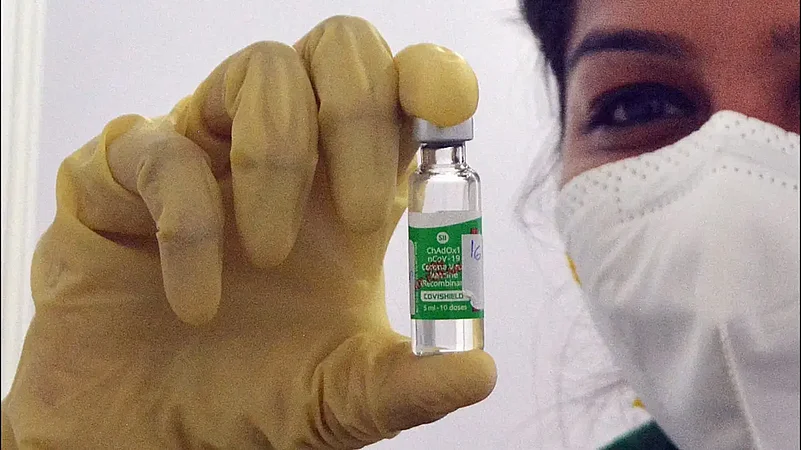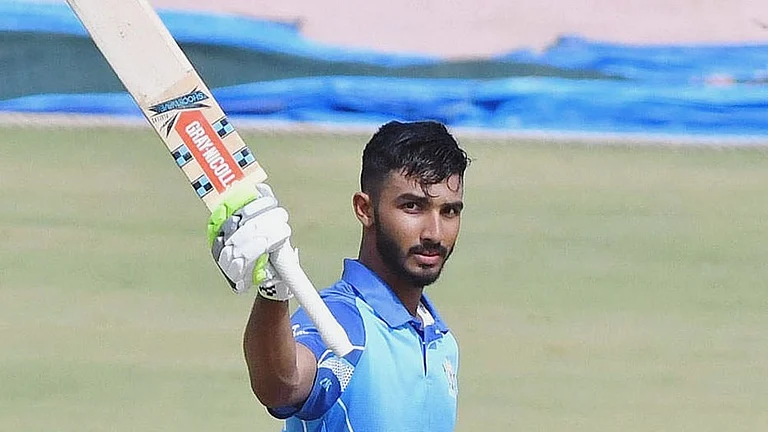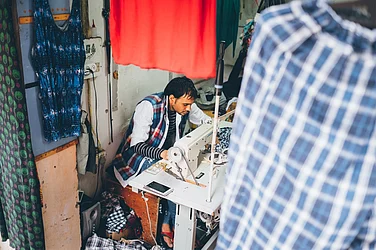Amid spiking Covid-19 cases around the globe since the emergence and spread of a new Omicron sub-variant BA.2, murmurs of a fourth Covid-19 wave have already started doing the rounds. With over 40 million Covid-19 cases in the country to date, second only to the United States, India’s health system took a beating last year during the second wave of Covid-19, which peaked across India by the end of April. Thousands lost their lives to the deadly Delta variant with many dying due to the unavailability of hospital beds or oxygen inside hospitals. The period saw a blatant rise in prices of oxygen cylinders, Covid home care services and private transport fares among others. Even as the nation emerged battered from the second wave, the third wave, driven by Omicron, the latest variant of SARS-CoV-2, was waiting just down the corner. While the ‘milder’ Omicron spread more rapidly than Delta, its effects were less deadly. Experts have since doubled down on the importance of vaccination and many have congratulated India’s immunisation drive.
In the last few months, however, BA.2, a sub-variant of Omicron associated with deadlier symptoms, has been doing the rounds, making immunologists around the world nervous. BA.2, has now become the most dominant variant of the highly transmissible virus across the globe. This variant has now prompted a surge of the virus across countries in Asia and Europe, forcing China to undergo a strict lockdown in two years. Experts fear that the variant can cause a new wave in countries like the United States.
Lockdown in China
The Chinese financial capital Shanghai with a population of 26 million went into the first of a two-phase lockdown initiated by the the Chinese government falling a sudden spike in cases. Shanghai had managed its smaller previous outbreaks with limited lockdowns of housing compounds and workplaces where the virus was spreading. But the citywide lockdown that will be conducted in two phases will be China's most extensive since the central city of Wuhan, where the virus was first detected in late 2019, confined its 11 million people to their homes for 76 days in early 2020. Millions more have been kept in lockdown since then.
Shanghai's Pudong financial district and nearby areas will be locked down from Monday to Friday as mass testing gets underway, the local government said. In the second phase of the lockdown, the vast downtown area west of the Huangpu River that divides the city will start its own five-day lockdown Friday.
The spike in cases has cast aspersions over the efficacy of China’s strict ‘Zero Tolerance policy against Covid-19 and also raised alarm in neighbouring India.
Fourth wave in India?
With 1,259 fresh cases, India's Covid-19 tally climbed to 4,30,21,982 on Tuesday, even as the number of active cases of the infection further declined to 15,378, a reduction of 481 cases in a span of 24 hours. However, on Sunday, the daily spike was over 14,000. One of the reliefs is that the daily number of new cases has dropped to the lowest in two years. However, scientists and researchers in India have been warning of a fourth wave, driven by a new sub variant. A recent study by researchers at K-IIT have predicted a third wave that would hit by the end of June. The authors of the paper, which is yet to be peer-reviewed and appeared first on MedRxiv, employed a specific statistical model to make the prediction. The study also stated that the wave will last for four months. Experts, however, have questioned the findings of the study. Forecasting models such as the one used by K-IIT for the study are good for studying short term spikes but not entirely effective for long term data, experts told news agency PTI following the report. But with the rise of the new sub-variant, ‘stealth’ Omicron, around the globe, concerns have once again risen.
Why are Covid-19 cases surging again?
According to the World Health Organisation, BA.2 now represents 86 per cent of all sequenced variants, making it more transmissible than the BA.1 and BA.1.1 strains. Like the original variant, this BA.2 sub-variant is also believed to have the ability to escape immunity from vaccines and from some antibody treatments. However, according to UK Health Security Agency data, protection is restored by a booster jab, particularly for preventing hospitalisation and death.
Countries like China, France, Italy, South Korea and New Zealand have recorded massive surges in March. Scientists believe that the sudden surge in cases and the global uptick of the variant happened at the same time when countries started lifting the lockdown restrictions and public health interventions. However, a rise still predicts that the virus still causes harm, particularly among unvaccinated, under-vaccinated and vulnerable populations.
Can India handle a fourth wave?
Despite the global surge, speaking to BBC virologist Gagandeep Gang said that India was “in a good place”. NITI Ayog member and paediatrician, Dr VK Paul recently addresses a press conference in which he said that India is prepared for another possible wave/
Here are some of the reasons why experts think India is better prepared for the fourth wave, in case one emerges:
Successful vaccinations: India has fully vaccinated about 80 per cent of its adult population. 94 per cent of the same have received at least the first dose.
BA.2 already present in India: Moreover, scientists claim that the Omicron sub-variant BA.2 which is fuelling the global surge had already spread in India. In February, a group of scientists reported that Omicron had already become a dominant strain in India, meaning that the BA.2 wave may already be over. When it comes to the longevity of vaccine immunity, experts find that doses of the Covid-19 vaccine may be effective in providing protection from the virus. In India, booster shots are already being given to the elderly with comorbidities and frontline workers and the vaccination drive for children has also been started.
Vaccine availability: India has decided to use the same vaccine as booster shot. Meaning those who have received Covishield shots will get another Covishield shot as a booster. According to the Serum Institute of India, the makers of Covishield, the most used Covid-19 vaccine in India, there are 200 million doses of Covishield available for use with the company.

Booster policy
While the points make India look to be in a better position to handle a potential wave, experts like virologist Shahid Jameel have questioned India’s booster policy.
The government has not yet announced any plans to roll out the booster drive for the rest of the population and many like Jameel wonder why the government is “ignoring the science of boosters” and not approving mRNA vaccines and protein-based boosters like Novavax (SII is producing and exporting another variant of the vaccine as Covavax but it’s not approved in India). Many like King and Jameel told BBC that India should now be looking at a more strategic booster policy driven by real-time research and data about the longevity of vaccine immunity in people from different age groups and also consider using a mixture of vaccines as boosters instead of using the same vaccine.
Complacency and tracking variants
With Covid-19 cases dropping, Indians, as well as the government, seem to be relaxed and in no mood to worry further about Covid-19. Though masks remain mandatory, the number of people wearing them on the streets has drastically reduced. Various state governments are currently in the process of ‘unlocking’ and the centre is even considering dropping the Covid-19 announcement that has been mandatory upon making phone calls across the country for two years now. But is the pandemic really over?
While the immunisation numbers have indeed improved, experts around the world have not ruled out the possibility of new variants or sub-variants, deadlier than Omicron, emerging that may have had the ability to evade vaccines. Such “complacency” on part of both the government and society, an Indian Institute of Management - Ahmedabad professor had said in 2021, was a major cause for the mayhem that ensued during the Delta-driven second wave. Tumbe, who authored the book titled 'The Age of Pandemics: How They Shaped India and the World', had also said that the failure to keep track of the different strains of the virus left the country underprepared to deal with the second wave and added that India will have to be alert for at least two more years to the possibility of a repeated wave of this crisis.
In an interview with PTI just under a year ago, Tumbe had said, “…everybody assumed that the pandemic is over, but serious pandemic rarely gets over in a few months, so that was a big mistake”. Will it be a mistake to assume that the pandemic is over this time, as is the case in India?
How to prepare for a fourth wave
In case a fourth wave does break, experts have suggested ways to mitigate the damage.
Early action: Previous waves have taught healthcare experts the importance of noticing early trends and signals and following up on quick containment plans that are effective in mitigating the speed of the virus locally.
Prepare hospitals: In the second wave, several deaths were reported due to alleged unavailability of medical resources. It is incumbent upon the government to ensure that all necessary resources are ready for Covid-19 patients including Covid-wards, oxygen supply ICUs, in case of an outbreak.
Counter-strategy: Trace-track-isolate-treat is the mantra of most infectious disease management policies. But previous Covid-19 waves with high transmissibility have shown us that the method may not always work. Writing for News18, Additional Chief Secretary, Dept of Health and Family Welfare, Govt of UP Dr Amit Prasad Mohan said the the a better strategy would be to trace only symptomatic contacts of infected persons instead of testing each unique contact. The move can help save previous time in testing and prevent overburdening of the system and also help in early mitigation.


























